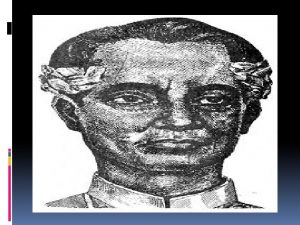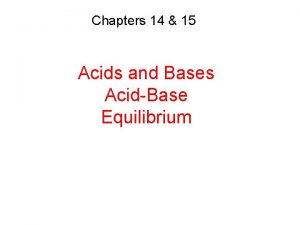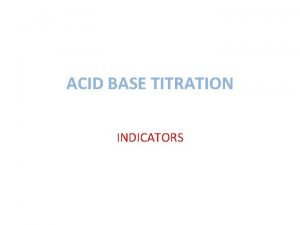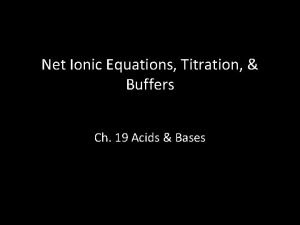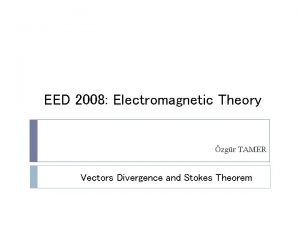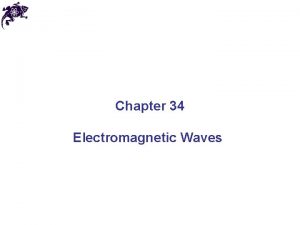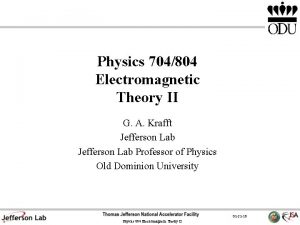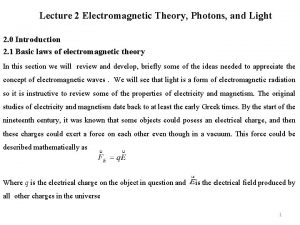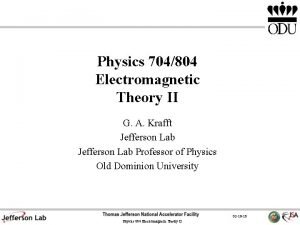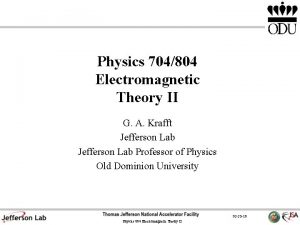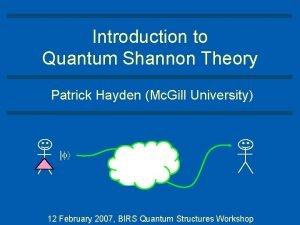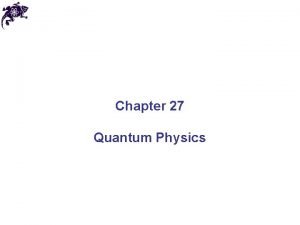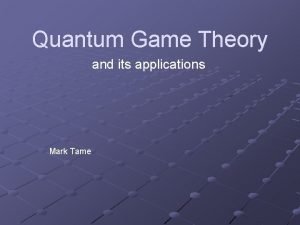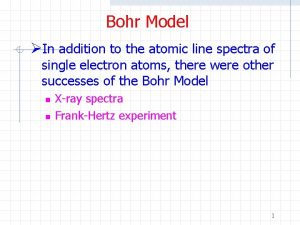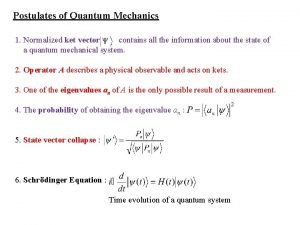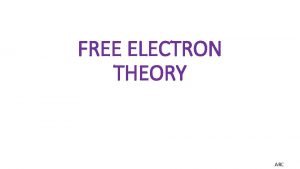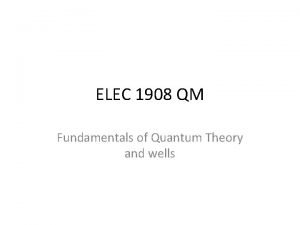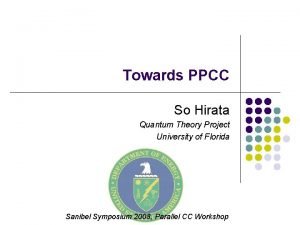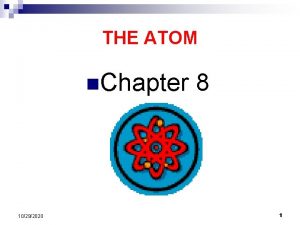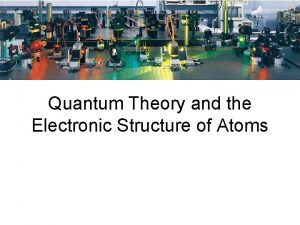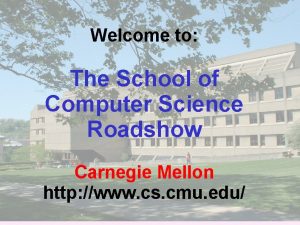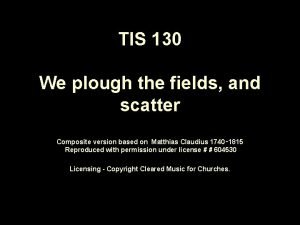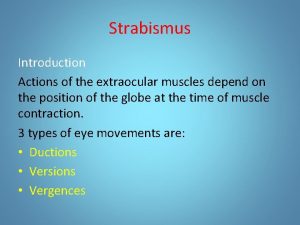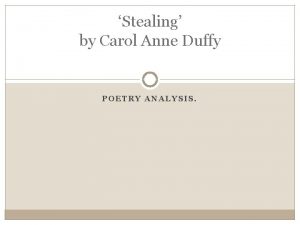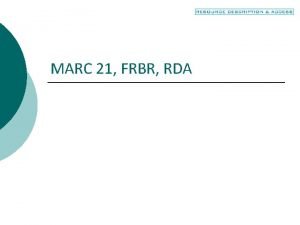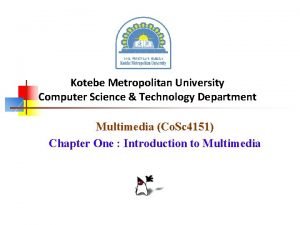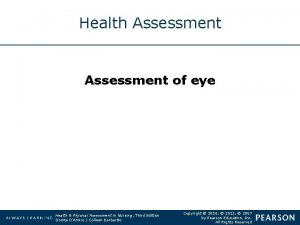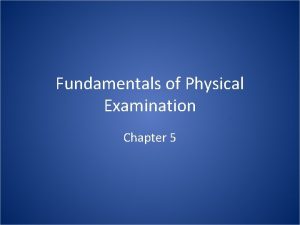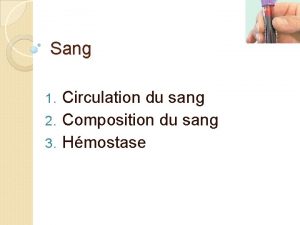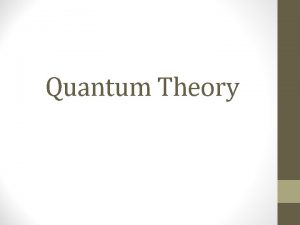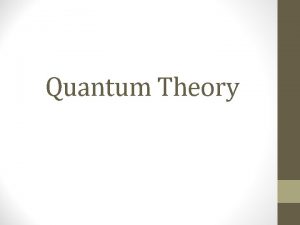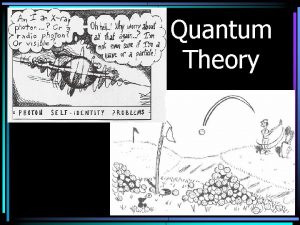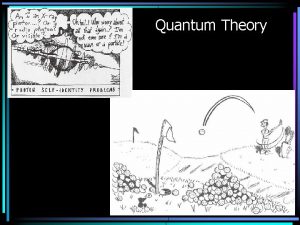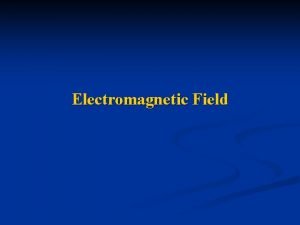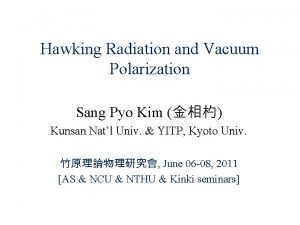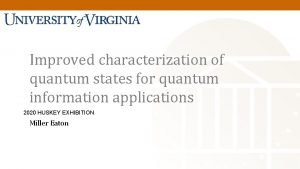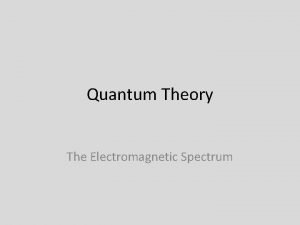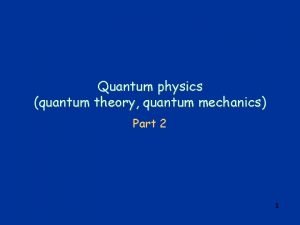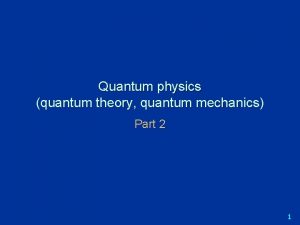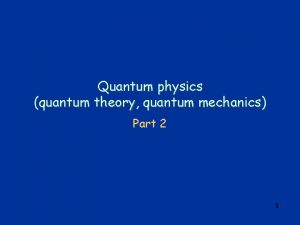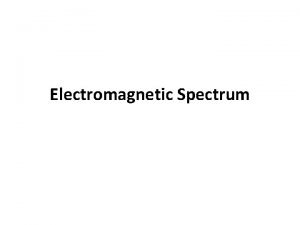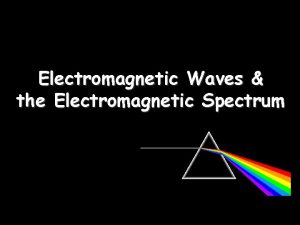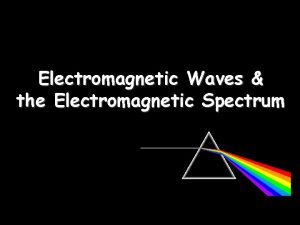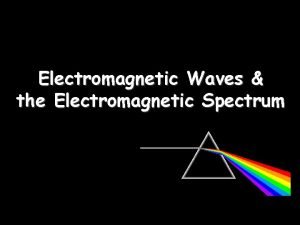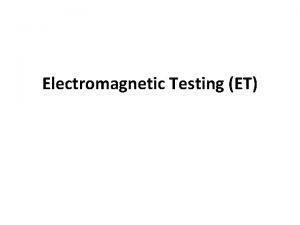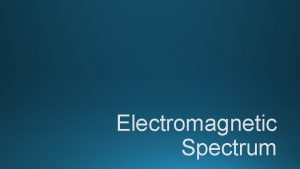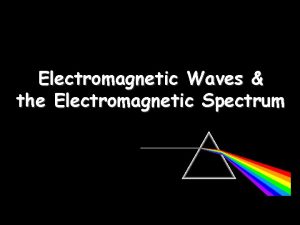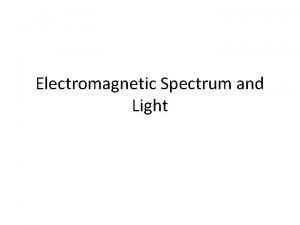Quantum Theory in Strong Electromagnetic Fields Sang Pyo





![Klein Paradox • O. Klein found [Z. Phys. 53 (’ 29)] that the Dirac Klein Paradox • O. Klein found [Z. Phys. 53 (’ 29)] that the Dirac](https://slidetodoc.com/presentation_image/59de079bb359c6e731f27580ae6a2b40/image-6.jpg)


![Quest for Vacuum and Pair Production [SPK, JHEP 11(‘ 07)] Schwinger Mechanism/ Polarization Vacuum Quest for Vacuum and Pair Production [SPK, JHEP 11(‘ 07)] Schwinger Mechanism/ Polarization Vacuum](https://slidetodoc.com/presentation_image/59de079bb359c6e731f27580ae6a2b40/image-9.jpg)



























![Thermofield Dynamics • Thermal vacuum [Takahashi, Umezawa (’ 75)] • Thermal expectation value: the Thermofield Dynamics • Thermal vacuum [Takahashi, Umezawa (’ 75)] • Thermal expectation value: the](https://slidetodoc.com/presentation_image/59de079bb359c6e731f27580ae6a2b40/image-37.jpg)










- Slides: 47

Quantum Theory in Strong Electromagnetic Fields Sang Pyo Kim Kunsan Nat’l Univ. & IOA, Nat’l Taiwan Univ. National Tsing Hua University February 20, 2012

Outline • • Historical Background Extreme Light Infrastructure Schwinger Pair Production Electron-Positron Pair Production/ Condensed Matter Analog • Heisenberg-Euler and Schwinger Action • Vacuum Polarization and Persistence • Conclusion

Dirac Vacuum and Paradox

Dirac Theory of Electron • Dirac, “The Quantum Theory Electron, ” PRSL SA 117 (‘ 28) • “A Theory of Electrons and Protons, ” PRSL SA 126(‘ 30) – The Dirac equation also has negative energy solutions as well as positive solutions for electrons, as for all relativity theories, for instance, the relativity Hamiltonian – In classical theory the dynamical variables must always vary continuously and there will be a sharp distinction between positive solutions and negative solutions (simply ignored).

Dirac Sea or Vacuum • “A Theory of Electrons and Protons, ” PRSL SA 126(‘ 30) – All the states of negative energy are occupied except perhaps a few of small velocity (holes). We expect the exact uniform distribution to be completely unobservable. • “Discussion of the infinite distribution of electrons in theory of positron, ” MPCPS 30 (‘ 34) – One can give a precise meaning of a distribution of electrons in which nearly all of the negative-energy states are occupied and nearly all of the positiveenergy ones unoccupied. – Further work that remains to be done is to examine the physical consequences of the foregoing assumption and to see whether it leads to any physical phenomena of the nature of a polarization of a vacuum by an electromagnetic field.
![Klein Paradox O Klein found Z Phys 53 29 that the Dirac Klein Paradox • O. Klein found [Z. Phys. 53 (’ 29)] that the Dirac](https://slidetodoc.com/presentation_image/59de079bb359c6e731f27580ae6a2b40/image-6.jpg)
Klein Paradox • O. Klein found [Z. Phys. 53 (’ 29)] that the Dirac eq could predict the reflection probability greater than one. • The Klein paradox is that fermions can pass through large repulsive potential without exponential damping.

Pair Annihilation and Pair Production • Annihilation of electron-positron pair by Dirac (‘ 30) • Breit-Wheeler process of electron-positron production in collision of two photons (‘ 34) with threshold energy

Photon-Photon Scattering • Classical Maxwell theory is linear and thus prohibits a selfinteraction (direct scattering). • QED permits and to interact with virtual e-e+ pair from the Dirac sea: the cross section in the low energy limit of the two colliding in the center of momentum frame) [Euler (‘ 36); Akhiezer (‘ 37); Karplus, Neuman (‘ 50)]: a vacuum polarization effect • We have NOT seen the photon-photon scattering since the early universe, but ELI is highly likely to detect it.
![Quest for Vacuum and Pair Production SPK JHEP 11 07 Schwinger Mechanism Polarization Vacuum Quest for Vacuum and Pair Production [SPK, JHEP 11(‘ 07)] Schwinger Mechanism/ Polarization Vacuum](https://slidetodoc.com/presentation_image/59de079bb359c6e731f27580ae6a2b40/image-9.jpg)
Quest for Vacuum and Pair Production [SPK, JHEP 11(‘ 07)] Schwinger Mechanism/ Polarization Vacuum Fluctuations QED Condensed Matter Analogues Black Holes Hawking Radiation Black Hole Analogues

Ultrastrong Laser Sources

PW, Multi-PW and EW Lasers Hi. PER ELI • High Power laser Energy Research (Hi. PER) facility at CLF in UK for laser-driven fusion or fast ignition. • 200 k. J in 40 beams, several nanoseconds, photon energy 3 e. V. • 70 k. J in 24 beams, 15 ps and photon energy 2 e. V. • Extreme Light Infrastructure (ELI) [http: //www. extremelight-infrastructure. eu] • The 4 th facility for high intensity physics will achieve 200 PW (10 beams of 10 -20 PW), one shot per min and intensity 1025 W/cm 2.

Four Pillars of ELI-Beamlines Facility: Czech Republic ELI-Nuclear Physics Facility: Romania ELI-Attosecond Facility: Hungary • ELI-Ultra High Energy Field Facility – location to be selected in 2012 and scheduled in commissioning in 2017

Statistics of 4 Pillars of ELI Country Facility focus Power (PW) Pulse energy (J) Pulse width (fs) Rep rate (Hz) Romania Nuclear physics 10 (x 2) 200 20 0. 1 Hungary Attosecond physics 1/20 5/400 5/20 1000/0. 1 Czech Republic Secondary beam radiation, highenergy particles 1/5/10(x 2) 10/50/200 10/10/20 10/10/0. 1 To be determined High intensity 10 -20 (x 10) 30 -40 k. J 15 0. 1 Di Piazza, Muller, Hatsagortsyan, and Keitel, “Extremely high-intensity laser interactions with fundamental systems, ” ar. Xiv: 1111. 3886 [hep-ph]

Physics from Ultra High Field • • • Particle physics Nonlinear field theory Gravitational physics Astrophysics and cosmology Nuclear physics Ultrahigh-pressure physics

ELI & Schwinger Limit • The Schwinger limit (critical strength) for ee+ pair production

Fundamental Physics with ELI • Can test strong QED (Delbruck scattering) (Photon splitting) (Pair production) • Can test the Hawking-Unruh radiation( )

Schwinger Pair Production

Klein-Gordon or Dirac Equation • In the space-dependent gauge A(z) for E(z), the Fourier spincomponent equation (tunneling) • In the time-dependent gauge A(t) for E(t), the Fourier spincomponent equation for Dirac or Klein-Gordon equation

Dirac Theory of Electron & Positron • The vacuum is the Dirac sea, fully occupied with all electrons with momenta and negative energy. • Depletion of a negative energy state means that the sea has a positive net charge and positive net energy (like electron-hole in semiconductor). • The conservation of energy and momentum prohibits spontaneous pair production (jump from a negative energy to a positive one). Fig. from Ruffini, Vereshchagin, and Xue, Phys. Rep. 487 (2010)

Tunneling Picture for Schwinger Pair Production • Application of a constant E-field changes the energy spectra: • Quantum mechanically, a negative charge from the Dirac sea can tunnel through the tilted barrier, which leads to particle-antiparticle pair. • The tunneling probability is the Schwinger formula for pair production: Fig. from Ruffini, Vereshchagin, and Xue, Phys. Rep. 487 (2010)

Scattering Picture & Stokes Phenomenon Scattering over the Barrier Stokes Phenomenon [Fig. from Dumlu & Dunne, PRL 104 (2010)]

Boson & Fermion Production • In the phase-integral method, the mean number of pairs in the gauge field with one pair of turning points [SPK, Page, PRD 65 (‘ 02); 73 (‘ 06); 75 (‘ 07)]: • For gauge field with two pairs of turning points, the mean number of boson pairs [Dumlu & Dunne, PRL 104 (2010)] • The mean number of fermion pairs

Quantum Vlasov Equation • In the time-dependent gauge for electric field, the energy of the charged particle takes the form • The pair production rate in the adiabatic approach [Popov, JETP 34 (‘ 72); Kluger et al, PRL 67 (‘ 91)] • The pair production rate in the non-adiabatic approach [SPK, Schubert, PRD 84 (‘ 11)]

Electron-Positron Pair Production

Electron-Positron Pair Production • e-e+ production by a high energy photon propagating in a strong laser field (Breit-Wheeler pair production). • e-e+ production by a Coulomb field in the presence of a strong laser field. • e-e+ production by two counter-propagating strong laser beams forming a standing light wave (spontaneous production in strong electric field).

Pair Production Electron-laser collisions Dynamically Assisted Schwinger Mechanism Laser photon energy: 2. 4 e. V [Hu et al, PRL 105 (‘ 10)] [Dunne et al, PRD 80 (‘ 09); PRL 101 (’ 08)]

Condensed Matter Analogue

Condensed Matter Analogue of QED • The relation between theory of dielectric breakdown in condensed matter and nonlinear QED from the view point of the effective Lagrangian [Oka, Aoki, Lect. Notes Phys. 762 (‘ 09)] Condensed Matter Mechanism Excitation Effective action QED Landau-Zener tunneling Schwinger mechanism Electron(doublon)-hole pair Electron-positron pair Nonadiabatic Berry’s phase Nonlinear polarization Photovoltaic Hall effect Floquet picture Heisenberg-Euler/Schwinger - interaction (birefringence) Furry picture

Strong Field Physics in Condensed Matter • Several Phenomena in condensed matter physics in strong electric fields in E(field strength)- (photon energy) space [Oka, Aoki, ar. Xiv: 1102. 2482; Lect. Notes Phys. 762 (‘ 09)] Carriers (doublons and holes) created by an external electric field

Graphene Analogue of QED • Effectively massless Dirac fermions • The Klein paradox • T = 1 for normal incidence or qx. D = N. • The Klein tunneling was experimentally observed in graphene heterojunctions [A. F. Young and P. Kim, Nat. Phys. 5 (‘ 09)]. Fig. Katsnelson, Novoselov and Geim, Nat. Phys. 2 (‘ 06)

Heisenberg-Euler & Schwinger Effective Action

Heisenberg-Euler/Schwinger Effective Action • Maxwell theory and Dirac/Klein-Gordon theory are gauge invariant: • The Heisenberg-Euler/Schwinger effective action per volume and time [J. Schwinger, “On gauge invariance and vacuum polarization, ” PR 82 (‘ 51) 664; B. De. Witt: “This is one of the great papers of all time. ”]

Going Beyond Schwinger

One-Loop Effective Actions • The in-/out-state formalism via the Schwinger variational principle [Schwinger, PNAS(‘ 51); De. Witt, Phys. Rep. (‘ 75), The Global Approach to Quantum Field Theory (‘ 03)] • The vacuum persistence

Out-Vacuum from In-Vacuum • For bosons, the out-vacuum is the multi-particle states of but unitary inequivalent to the in-vacuum: • The out-vacuum for fermions:

Effective Actions at T=0 & T • Zero-temperature effective action for scalar and spinor from the gamma function-regularization [SKP, Lee, Yoon, PRD 78, (‘ 08); 82, 025016 (‘ 10); SPK, PRD 84 (‘ 11) ] • finite-temperature effective action for scalar and spinor [SKP, Lee, Yoon, PRD 82, 025016 (‘ 10)]
![Thermofield Dynamics Thermal vacuum Takahashi Umezawa 75 Thermal expectation value the Thermofield Dynamics • Thermal vacuum [Takahashi, Umezawa (’ 75)] • Thermal expectation value: the](https://slidetodoc.com/presentation_image/59de079bb359c6e731f27580ae6a2b40/image-37.jpg)
Thermofield Dynamics • Thermal vacuum [Takahashi, Umezawa (’ 75)] • Thermal expectation value: the expectation value in thermal vacuum • Finite-temperature field theory is equivalent to zerotemperature field theory in the “thermal vacuum”.

Effective Action at T • Expectation value of U in thermal vacuum • Effective action per unit volume and time

Vacuum Polarization & Persistence • Purely thermal part of the effective action • Imaginary part of the effective action • Real part of the effective action

Vacuum Polarization at T • Structure of the effective action at T

Pair Production at T • Imaginary part of the effective action (the limit of small mean number of produced pairs) • Consistent with the pair-production rate at T [SPK, Lee, PRD 76 (‘ 07); SPK, Lee, Yoon, PRD 79 (‘ 09)]

QED Effective Action in E=const • The Bogoliubov coefficient for scalar and spinor in constant E-field [SPK, Lee, Yoon, PRD 78 (‘ 08)] • The effective action for scalar/volume and time

QED Vacuum Polarization • Scalar QED: renormalized effective action per volume and per time for a constant E-field • Spinor QED: renormalized effective action per volume and per time for a constant E-field

QED Vacuum Persistence • Spinor QED: Schwinger pair production in a constant E-field • Scalar QED: Schwinger pair production

Vacuum Polarization Beyond Schwinger • Scalar/Spinor QED in a pulsed E-Field [SPK, Lee, Yoon, PRD 78 (‘ 08)] • Imaginary part from the mean number of pairs

Vacuum Polarization Beyond Schwinger • Scalar/Spinor QED in a localized E-Field [SPK, Lee, Yoon, PRD 82 (‘ 10)] • Imaginary part from the mean number of pairs

Conclusion • The ultra strong lasers from Extreme Light Infrastructure (ELI) can detect – Direct photon-photon scattering (vacuum polarization) – Schwinger pair production (vacuum persistence) – Other nonperturbative phenomena • Strong Field Physics (& quantum structure of vacuum) will be based on experimentation, direct or indirect: – Strong QED & QCD – QFT in curved spacetimes
 Brachy prefix
Brachy prefix Ephesians 6 10-20 nkjv
Ephesians 6 10-20 nkjv Red fields
Red fields Isang uri ng patulang pagtatalo
Isang uri ng patulang pagtatalo Classical mechanics
Classical mechanics Quantum physics vs quantum mechanics
Quantum physics vs quantum mechanics Strong acid weak base titration graph
Strong acid weak base titration graph Mgkp
Mgkp How to remember strong acids and strong bases
How to remember strong acids and strong bases Weak base strong acid titration curve
Weak base strong acid titration curve Strong base strong acid
Strong base strong acid Net ionic equation of titration
Net ionic equation of titration Curl of a vector in cylindrical coordinates
Curl of a vector in cylindrical coordinates Electromagnetic waves obey principle of .. *
Electromagnetic waves obey principle of .. * Electromagnetic theory
Electromagnetic theory Electromagnetic theory
Electromagnetic theory Electromagnetic theory
Electromagnetic theory Electromagnetic theory
Electromagnetic theory Quantum shannon theory
Quantum shannon theory Dual nature of light
Dual nature of light Quantum mechanical model
Quantum mechanical model Mark tame
Mark tame Electrons in atoms section 2 quantum theory and the atom
Electrons in atoms section 2 quantum theory and the atom Franck hertz
Franck hertz Quantum mechanics postulates
Quantum mechanics postulates Free electron gas theory resumes
Free electron gas theory resumes Xkcd exponential
Xkcd exponential Quantum theory project
Quantum theory project Quantum theory of light
Quantum theory of light Quantum theory and the electronic structure of atoms
Quantum theory and the electronic structure of atoms Norm rule fields
Norm rule fields How many fields in computer science
How many fields in computer science Electric forces and fields concept review
Electric forces and fields concept review Plough the fields and scatter
Plough the fields and scatter Tactile.fremitus
Tactile.fremitus Six cardinal fields of gaze
Six cardinal fields of gaze 6 cardinal fields of gaze
6 cardinal fields of gaze Stealing by carol ann duffy summary
Stealing by carol ann duffy summary Slope fields ap calculus
Slope fields ap calculus Rodan and fields tax write offs
Rodan and fields tax write offs I type mips
I type mips Frbr entities
Frbr entities Learning: module 26: magnetic forces and fields
Learning: module 26: magnetic forces and fields Scrap heap magnet circuit diagram
Scrap heap magnet circuit diagram Kotebe metropolitan university
Kotebe metropolitan university Eye
Eye Egophony
Egophony Behavioral psychology examples
Behavioral psychology examples



